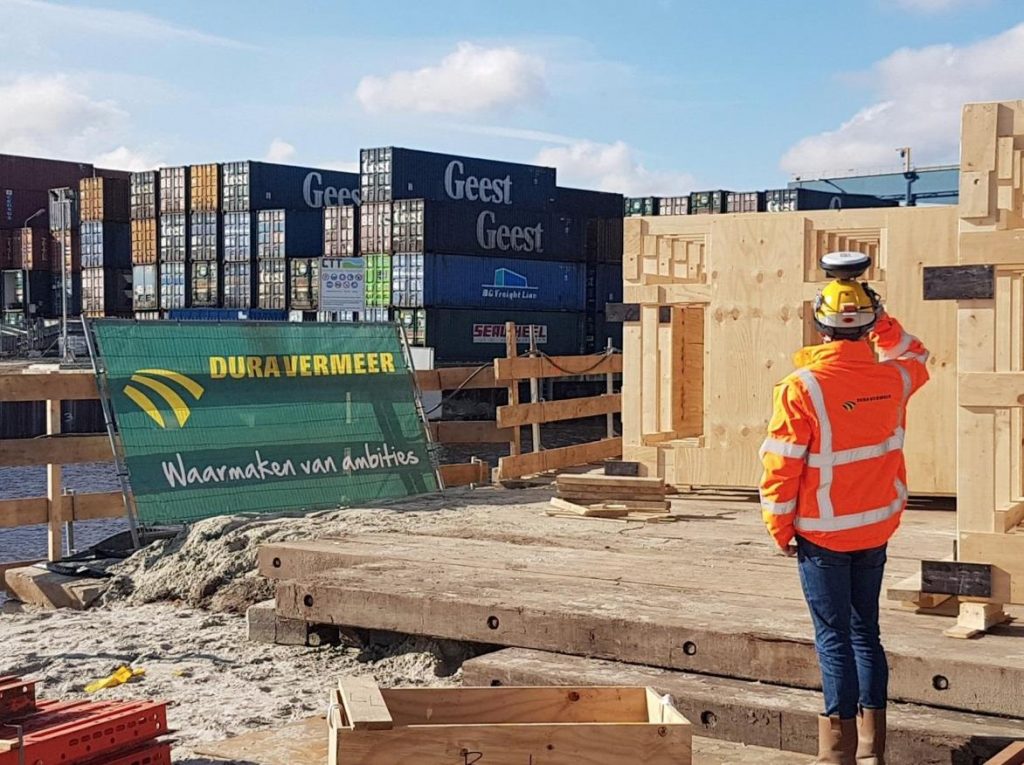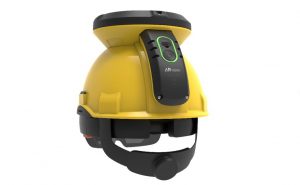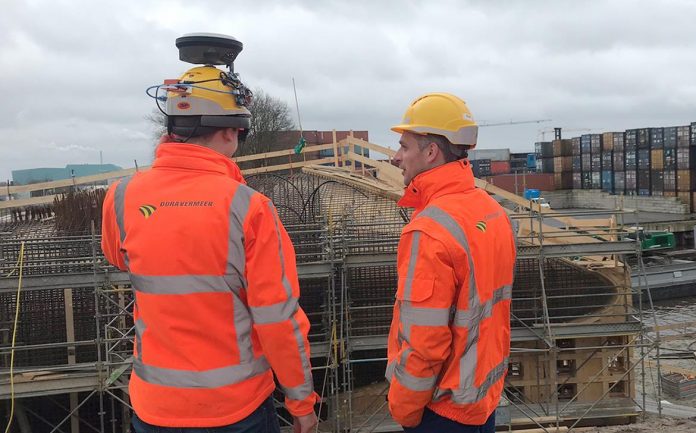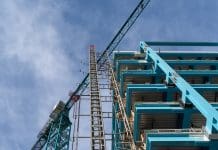Construction professionals can now ‘see’ a building in place and in rich detail before a single brick has been laid thanks to the Engineering Building Mixed Reality (EBMR) helmet
The EBMR helmet uses technology from Xsens that has been applied to a new venture between construction engineering company Dura Vermeer and augmented reality software developer Recreate.
The helmet provides for the first time a 3D, real-time holographic rendering of an architect’s plan overlaid on the user’s view of the building site. Standing on an empty building site, the user can see the structure, correctly positioned, as though it had already been built.
The construction industry has to deal with the variances between the ideal plan on paper – in the form of an architect’s drawings – and the reality on the ground. The architect’s design is a vision, but the job of realising this vision is the builder’s.
For centuries, the main way in which architects have communicated their vision to builders is in the form of a plan, or drawings: a 2D, abstract representation of 3D reality. Even today, when digital systems have replaced paper-based methods in so many domains, builders are still tied to computer renderings of an architect’s plan – drawings which are still 2D when viewed on a display screen.
Mentally projecting a flat, abstract representation on to 3D reality requires skill, judgement and interpretation on the part of building professionals. Inevitably, this creates scope for error, miscalculation and miscommunication between members of a construction project’s team.
The EBMR helmet allows the user to forgo errors which can occur from traditional 2D plans. As the user moves, their view of the structure moves. The user no longer has to imagine how the building will look, based on an understanding of the drawings: the EBMR helmet shows the user exactly how it will look, without ever having seen the drawings.
Using ultra-accurate satellite positioning data, the helmet knows exactly where the user is on the surface of the earth. From the drawings, it knows exactly where on the surface of the earth the structure is to be built. It can then ‘build’ the structure in virtual reality and present it to the user, accurately positioned and oriented.
How beneficial is the EBMR helmet?
The EBMR helmet has already been used in pilot projects, such as the construction by Dura Vermeer of a bridge in The Netherlands, and has provided three valuable benefits in them:
- Time saving – The helmet enabled construction and site managers to make faster and better decisions about the sequencing of tasks, about the allocation of assets such as construction equipment, and about the procurement and storage of materials.
- Cost saving – The EBMR helmet is so precise that it can be used to make on-site measurements that would previously have required the services of a professional surveyor.
- Quality improvement – The EBMR helmet eliminates the requirement for judgement and interpretation of the architect’s drawings.
What technology is used in the helmet?
To provide the capabilities of the EBMR helmet, Dura Vermeer and Recreate required four main hardware elements:
- A holographic projector – This is a Microsoft HoloLens device mounted at the front of the helmet.
- A positioning system – This is a Global Navigation Satellite System (GNSS) receiver mounted at the top of the helmet. GNSS receivers are small semiconductor-based modules, and are commonly used in vehicles and mobile phones to support navigation and mapping applications.
- A battery power supply – This needs to provide sufficient capacity to power the device for a whole day between charges, as charging on-site might not always be possible.
- An Xsens Inertial Measurement Unit (IMU) – A type of motion sensor module which provides orientation and heading information. Because of the IMU, the helmet knows in which direction the user is facing, and the position of the head.















